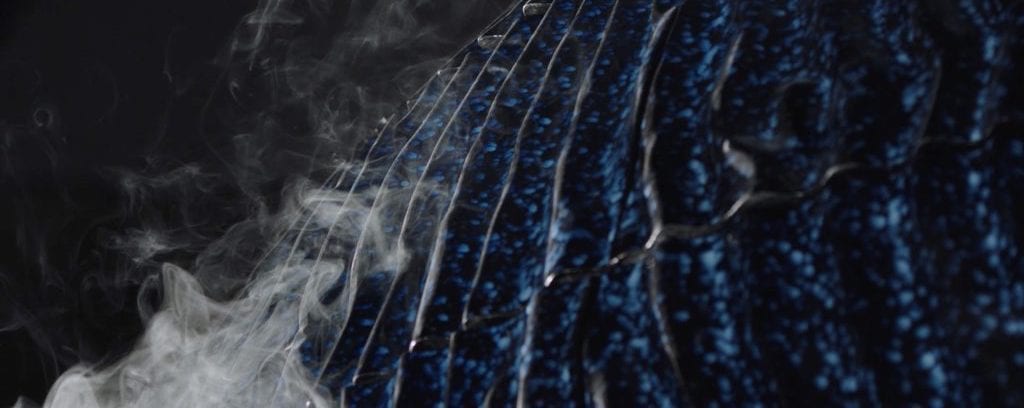CORNWALL, UK––Japanese architect Azusa Murakami and British artist Alexander Groves, none of which are ceramists, of Studio Swine (Super Wide Interdisciplinary New Explorers) created a 30-foot high and 30-ton sculpture: Infinity Blue. Though monumental, the ceramic sculpture pays homage to one of the world’s smallest organisms: cyanobacteria.
“Around 3 billion years ago, cyanobacteria first developed oxygenic photosynthesis. In doing so, they changed the nature of our planet. The sculpture is a monument to their vital creation, which continues to provide the oxygen in every breath we take.”


On the surface of the monument, Cornish clay and oxide glazes reflect local mining history, and the surface texture of the ceramic tiles is generated by a reaction-diffusion algorithm––similar to that found in nature from zebras to coral.


Strikingly, the immersive installation is equipped with 32 vortex cannons which fire vapor rings symbolizing, and whose scents tell a layered history of the earth’s atmosphere. The multidisciplinary studio writes that it also “collaborated with Paris perfume house Givaudan to develop fragrances inspired by the aromas of primordial worlds.”

The exhibit is part of the permanent Invisible Worlds installation at The Eden Project, “which reveals a world beyond your senses – too big, too small, too fast, too slow, too far away in space and time.”
About Studio Swine, from Design Boom:
“Creating works that span across disciplines of art, design and film, studio swine explores themes of regional identity and the future of resources in the context of globalization. Studio Swine’s work manifests a deep research into materials and modern industrialization.”
Design Boom




Add your valued opinion to this post.